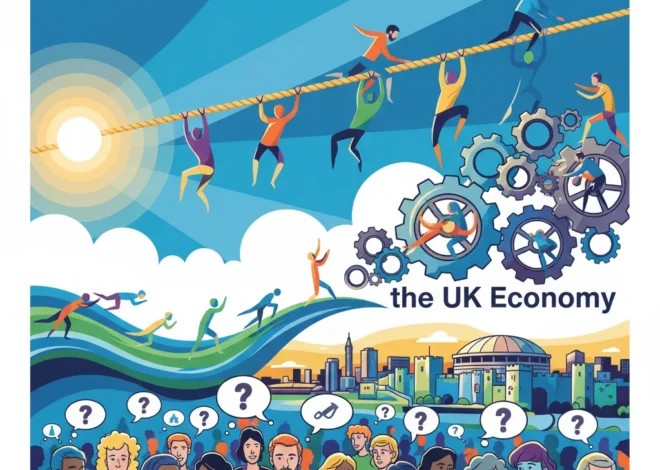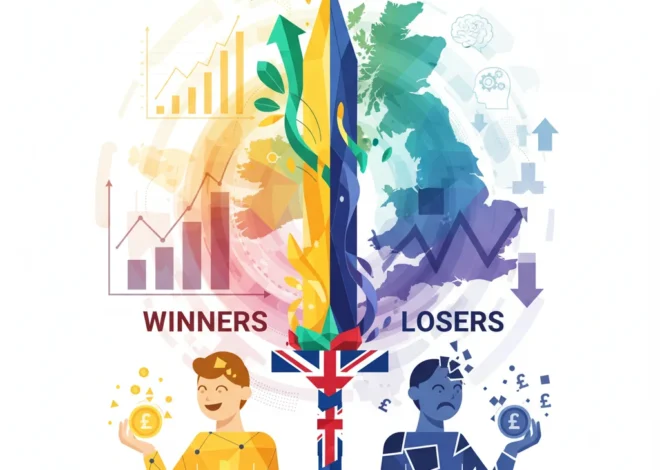
Argentina’s Economic Maze: Why Imported Cures Can’t Heal a Nation’s Chronic Ills
Argentina. The name itself conjures a potent mix of images: the passion of tango, the vastness of Patagonia, and the persistent, gut-wrenching specter of economic crisis. For decades, the nation has been trapped in a seemingly endless cycle of hyperinflation, debt defaults, and fleeting recoveries, making it a case study in economic volatility. International economists, policymakers, and investors watch, prescribe solutions, and then watch again as those solutions crumble against a complex reality.
A recent letter to the Financial Times by Marcos Roca poignantly captures the core of this frustration. The author argues that the simplistic, often externally imposed, fixes for Argentina’s deep-seated problems are doomed to fail. This isn’t just a critique of one policy or another; it’s a fundamental challenge to the idea that a nation’s economic soul can be repaired with a standard toolkit of fiscal adjustments and monetary theory. Argentina’s problems, the letter suggests, are not just on a spreadsheet—they are woven into the very fabric of its society, politics, and culture.
This post delves into that crucial argument, exploring why textbook economic solutions repeatedly fail in Argentina and what this means for the future of its economy, for investors navigating its turbulent markets, and for the world of international finance.
The Perennial Patient: A History of Crisis and “Cures”
To understand the present, one must look at the past. Argentina’s relationship with international finance, particularly the International Monetary Fund (IMF), is long and fraught with difficulty. The country holds the dubious distinction of being the IMF’s largest debtor, with a history of 22 separate arrangements. As noted by the Council on Foreign Relations, this recurring cycle of borrowing and crisis has created a deep-seated mistrust of external financial institutions among the Argentine populace.
The typical prescription from abroad involves a familiar cocktail of policies:
- Fiscal Austerity: Drastic cuts in public spending to close the budget deficit.
- Monetary Tightening: Raising interest rates and stopping the printing of money to fight inflation.
- Structural Reforms: Privatizing state-owned companies, deregulating markets, and liberalizing trade.
On paper, these measures make sense within the framework of neoclassical economics. In practice, they often trigger severe recessions, increase poverty, and fuel political backlash, leading to their eventual abandonment and a return to populist, high-spending policies. The cycle begins anew. The latest chapter in this saga is the election of President Javier Milei, a self-described anarcho-capitalist who promised “shock therapy” with a “chainsaw” to the state. While his approach is ideologically different, it can be seen as another radical, externally-derived model being applied to a uniquely complex domestic situation.
Beyond the Grid: What the FT Crossword Teaches Us About Modern Investing
Beyond the Deficit: The Deep-Rooted Issues Textbooks Ignore
Marcos Roca’s letter correctly implies that focusing solely on the fiscal deficit is like treating a symptom while ignoring the disease. The true barriers to sustainable growth in Argentina are far more profound and less quantifiable than budget line items. They are structural, political, and cultural.
1. Political and Institutional Fragility
Decades of Peronism have cultivated a political culture centered on state patronage, powerful labor unions, and a vast network of subsidies. Any attempt at fiscal consolidation directly threatens this entrenched system, guaranteeing ferocious political resistance. The concept of an independent central bank, a cornerstone of stable monetary policy elsewhere, has been repeatedly undermined in Argentina, with the institution often forced to finance government spending through monetary issuance—a direct cause of hyperinflation.
2. A Culture of Informality and Distrust
Chronic instability has bred a rational distrust in the national currency and financial institutions. Argentines think in U.S. dollars, save under the mattress (or abroad), and operate in a massive informal economy to evade a notoriously complex and burdensome tax system. According to some estimates, the informal economy could account for over 20% of GDP. This reality makes official economic data less reliable and renders policies like tax hikes far less effective than they would be in a more formalized economy.
3. The “Boom and Bust” Mentality
When your currency can lose half its value in a year, long-term planning becomes a luxury. This has fostered a short-term mindset in both citizens and businesses. Investment horizons are compressed, and capital flows are notoriously fickle, rushing in during brief periods of optimism and stampeding out at the first sign of trouble. This makes building a stable capital base for long-term investing and economic development incredibly difficult.
The following table illustrates the relentless nature of this instability over the past two decades, showcasing why a “quick fix” is an illusion.
| Year | Annual Inflation Rate (%) | Real GDP Growth (%) | Key Economic/Political Events |
|---|---|---|---|
| 2003 | 13.4% | 8.8% | Recovery from 2001 default; Néstor Kirchner elected. |
| 2009 | 14.8% | -5.9% | Impact of Global Financial Crisis. |
| 2015 | 26.9% | 2.7% | Mauricio Macri elected on a pro-market platform. |
| 2018 | 47.6% | -2.5% | Currency crisis; Argentina seeks massive IMF loan. |
| 2022 | 94.8% | 5.0% | Post-COVID rebound amidst soaring inflation. |
| 2023 | 211.4% | -1.6% | Hyperinflation accelerates; Javier Milei elected. |
Source: Data compiled from IMF and World Bank statistics.
Forging a Sustainable Path: Beyond Imported Blueprints
If foreign formulas are not the answer, what is? A sustainable solution for Argentina must be homegrown, acknowledging the nation’s unique DNA. It requires more than just economic re-engineering; it necessitates a profound societal and institutional transformation.
A credible long-term strategy would need to include:
- A Broad Political and Social Pact: The most successful economic transformations (like the Moncloa Pacts in post-Franco Spain) were built on a broad consensus among major political parties, business leaders, and labor unions. Argentina needs a “pacto social” that establishes clear, long-term rules of the game for its economy, insulating it from the violent swings of the electoral cycle.
- Radical Institutional Reform: This means creating a truly independent central bank by law, simplifying the tax code to encourage compliance, and establishing a stable, predictable legal framework that protects property rights and encourages long-term investing. Without strong institutions, even the best policies will fail.
- Leveraging Financial Technology: The rise of fintech presents a unique opportunity. Digital payment systems and accessible online banking can help formalize the economy, bringing millions of Argentines into the official financial system. This broadens the tax base and improves the efficacy of monetary policy.
The Price of a Masterpiece: Unpacking the Economics of Basic Income for Artists
Lessons for Global Finance and Economics
Argentina’s struggle offers critical lessons for the global financial community. It is a powerful reminder that economics is not a pure science; it is a social science. Models that work in stable, high-trust societies cannot simply be copied and pasted onto nations with different histories and institutional frameworks.
For investors, this underscores the importance of deep, qualitative country analysis. Looking at a country’s debt-to-GDP ratio is easy; understanding its political fault lines and social cohesion is much harder, but ultimately more important for long-term trading and investment success. For bodies like the IMF, it highlights the need for greater flexibility and a deeper understanding of the local context, moving beyond a one-size-fits-all approach to sovereign debt and economic reform.
Europe's Trillion-Euro Question: Can a United Financial Front Win the Global Tech Race?
Conclusion: A Path Chosen, Not Imposed
The core message from Marcos Roca’s letter is a call for humility and context. Argentina’s path to stability will not be paved by libertarian theory from Austria or neoliberal consensus from Washington. It will be built, brick by painful brick, by Argentines themselves. It requires confronting the deep-seated political and cultural habits that have fueled the cycle of decline.
While President Milei’s shock therapy is a dramatic attempt to break the mold, its ultimate success will depend not on the sharpness of his chainsaw, but on his ability to convince a weary and skeptical nation to build something new and lasting from the rubble. The world of finance should watch with a critical eye, understanding that the solution to Argentina’s economic maze lies not in a foreign map, but in the country’s ability to finally draw its own.

